
8D ASSOCIATION
The 8D Association is dedicated to promoting the history of the railways of South Lancashire, Merseyside and North Cheshire.
A study of the signal boxes from Widnes to St Helens No3.
A look at the many boxes along this early railway from Widnes No3 through to St Helens Central station.
Widnes No3.
Widnes No3 Loco Junction as it was known opened in 1874 and was a Saxby and Farmer Type 6 box of all brick construction. The box was equipped with a Saxby and Farmer frame, until 1899 when it was replaced with an LNWR 28 lever tumbler frame. This frame was extended in 1907 to 29 levers. The box was abolished on Sunday 27th September 1931.
Widnes No2 Ann Street Crossing.
The first box to open here did so in 1869 and was a Saxby and Farmer box complete with a Saxby and Farmer frame. The box was abolished in May 1895 and replaced by an LNWR Type 4 wooden top with brick base box. This box was equipped with an LNWR 30 lever tumbler frame which was later extended to 35 levers. The box was abolished on Sunday 30th December 1973 with the crossing it controlled becoming automated until the lines closure in 1982.
Widnes No1.
The first box to open here was open by 1880 but was abolished in October 1893. It was quite likely that it was a Saxby and Farmer type box but no details have been recorded. The original box was replaced by an LNWR type 4 box which had a wooden top on a brick base. It was equipped with an LNWR 25 lever tumbler frame and would remain open until the southern section of the line closed on Sunday 18th April 1982. In latter years the box controlled the spur from the ex SH & RGR into Tanhouse Yard which had been constructed to allow the closure of the Widnes loop.
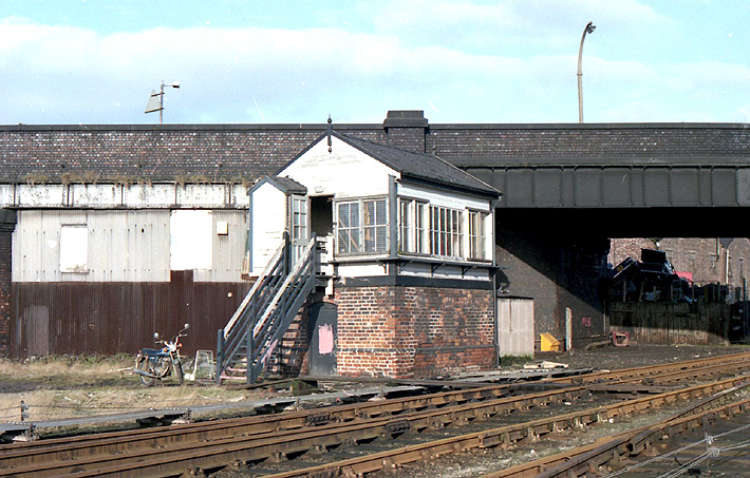
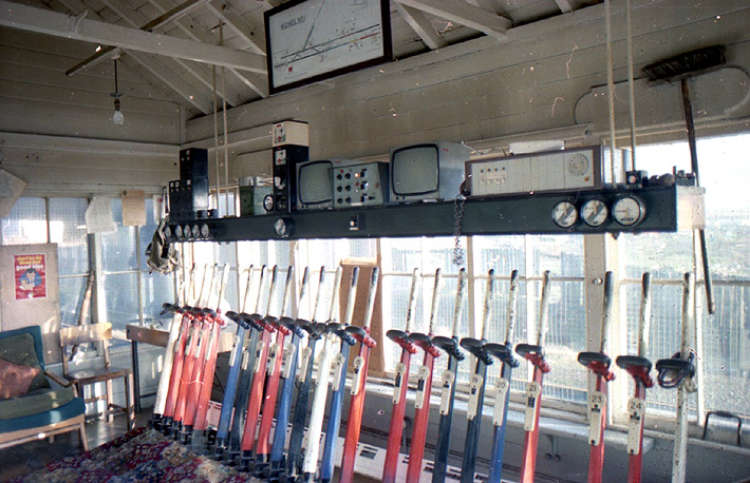
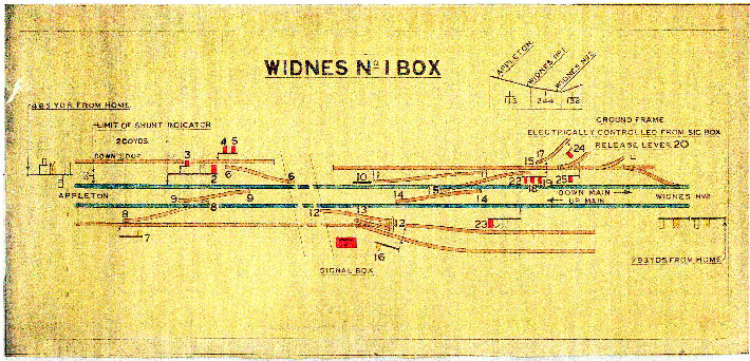
Appleton.
The first box at this location was open by 1879 and was a Saxby and Farmer Type 6 of all brick construction. The box was abolished in January 1904 in conjunction with a new box opening. The new box was an LNWR Type 4 wooden top on a brick base equipped with an LNWR 18 lever tumbler frame. The box was abolished on Sunday 11th December 1966.
Farnworth and Bold.
The first box at this location opened in the 1870’s and was a Saxby and Farmer Type 6 box of all brick construction. It was equipped with a Saxby and Farmer 17 lever frame it was abolished in 1920. The box was replaced in 1920 with an LNWR Type 5 wooden top on a small brick base as it was located on the station platform. It was equipped with an LNWR 40 lever tappet frame. This box was abolished on Sunday 4th November 1973, the associated sidings now being controlled by local ground frames which opened on the day the box was abolished.
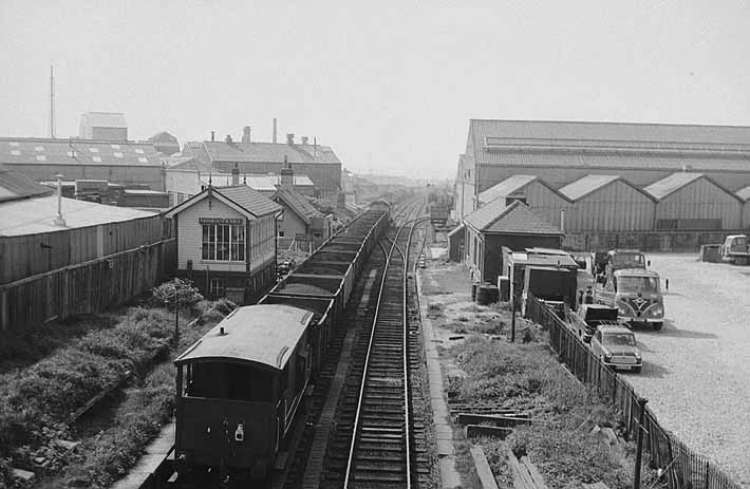
(Reproduced with permission from the Sankey Canal And Restoration Society. To view the societies web site click here )
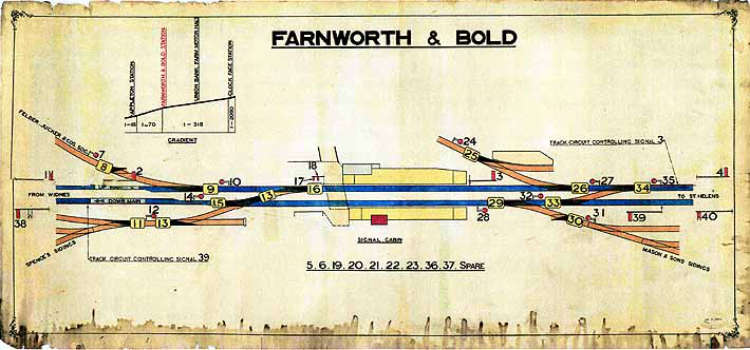

Farnworth No1 Ground Frame.
Farnworth No2 Ground Frame.
Clock Face Colliery.
The box here opened in March 1882 and was an LNWR Type 4 box wooden top on a brick base. It was equipped with an LNWR 25 lever tumbler frame. The box was abolished on Sunday 14th December 1969 and replaced by two ground frames to control the entrance/exit for trains into Sutton Manor colliery. These ground frames were located in anonymous small brick built cabins.
Clock Face No1/Sutton Manor No1 Ground Frame.
Clock Face No1/Sutton Manor No2 Ground Frame.
Clock Face No2.
The box at this location opened in June 1885 and was an LNWR Type 4 wooden top on a brick base. It was equipped with an LNWR 36 lever tumbler frame. The box was abolished on Sunday 21st April 1968. As with the next few boxes closure came as a direct result of the closure of the large sidings complex to the north of Clock Face station.
Clock Face Down Sidings.
Opened in June 1885 this box was an LNWR Type 4 box equipped with a LNWR 15 lever tumbler frame. The box was also abolished on Sunday 21st April 1968 with the closure of the down sidings.
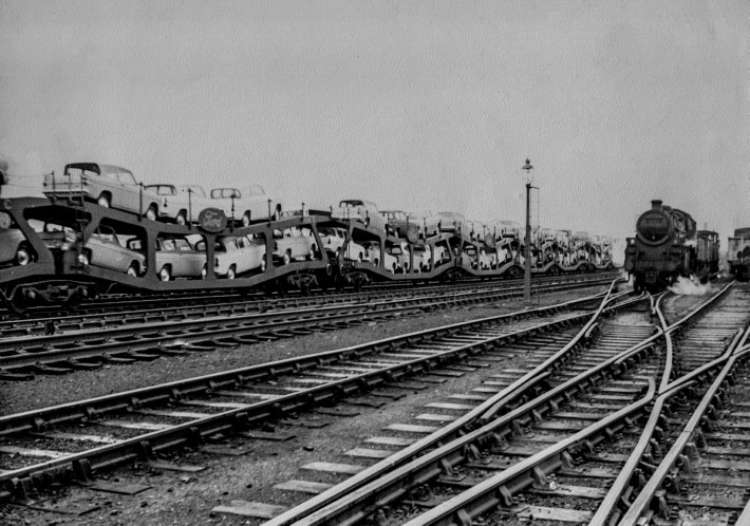
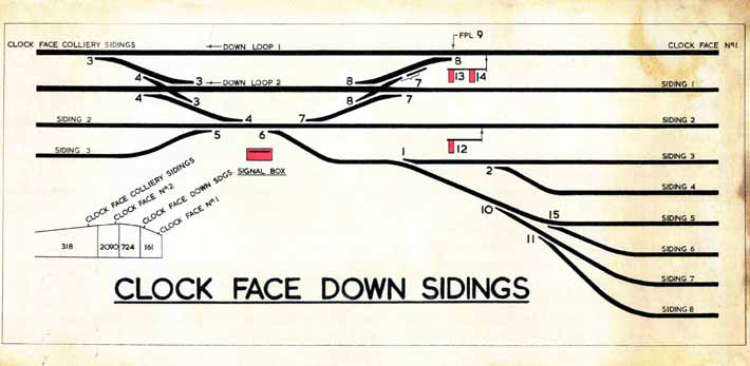
Clock Face Up Sidings.
Opened in June 1885 as part of the LNWR’s improvement work to provide more siding space in the area. The box would have been of the LNWR type and it was equipped with a 12 lever frame. The box was abolished with the closure of the Up sidings on Saturday 11th November 1961.
Clock Face Sidings No1.
Opened on Sunday 26th February 1961 this box was a BR LM15 Type it was opened as a direct result of the fire at Sutton Bank box. The box was equipped with a BR London Midland Region 40 lever frame. The box controlled traffic along the main line and entry to the Up sidings and therefore did not close with the closure of the Up sidings complex. The box was abolished on Sunday 14th December 1969.

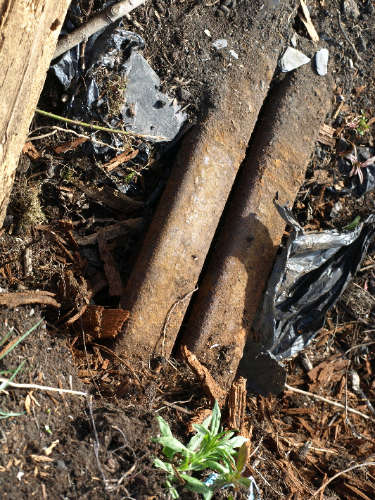
Two pictures showing the recently unearthed remains of Clock Face Sidings No1 box. 8D members Rod Dixon, Joe Cowley and Paul Wright are standing in the base of the box and the two pairs of bullhead rails used to support the frame can clearly be seen. The lower picture provides a close up of the rails. 4th May 2013.
Clock Face No1 Sutton Bank.
An LNWR type 4 box which opened in April 1885 and was equipped with a 34 lever tumbler frame. The box was damaged by fire in January 1961 and was officially taken out of use on Sunday 26th February 1961 with the opening of the new Clock Face Sidings No1. The box was finally abolished on Sunday 5th March 1961.
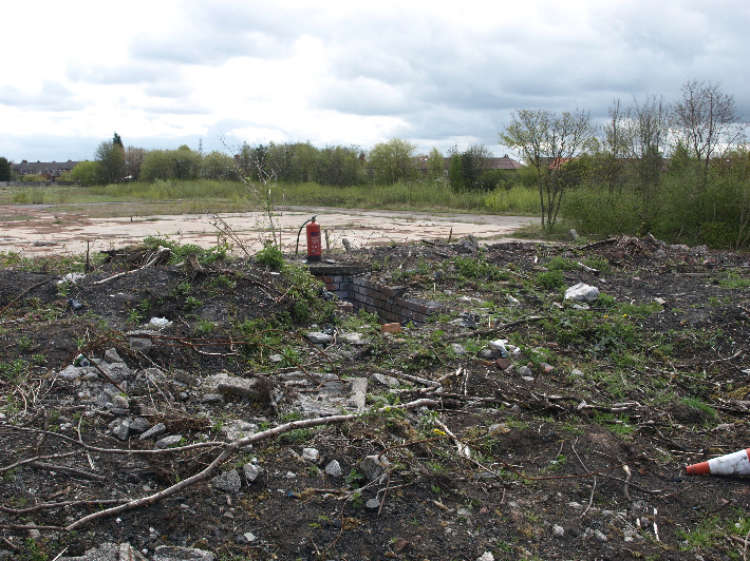
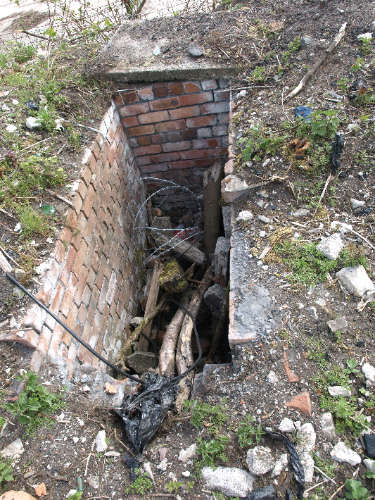
Two shots of the recently unearthed remains of Clock Face No1 Sutton Bank Box which was located a couple of steps away from the box which replaced it. 4th May 2013.
Sutton Oak Junction.
The first box to open here was open by 1879 and due to the increase of traffic in the area and the criticisms of the Board of Trade of the inadequate signalling in the area, which had resulted in a number of accidents, it was closed by 1885. The replacement box and the interlocking of signals and points was an LNWR Type 4 box equipped with an LNWR 49 lever tumbler frame. This box had opened by November 1885 and remained open until it was abolished in 1932. The replacement box was a LM & SR Type 11 non standard all wooden construction box which opened in 1932. The box was equipped with a 65 lever frame making it the largest box on the line. The box was abolished on Saturday 27th May 1989 with the closure of the section between St Helens Junction and Hayes Chemicals. The box was earmarked for preservation but the vandals got there before it could be dismantled, the box was burnt down.
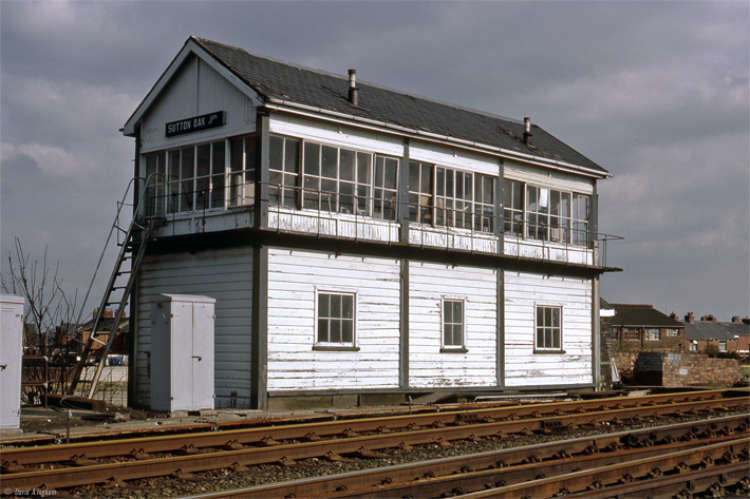
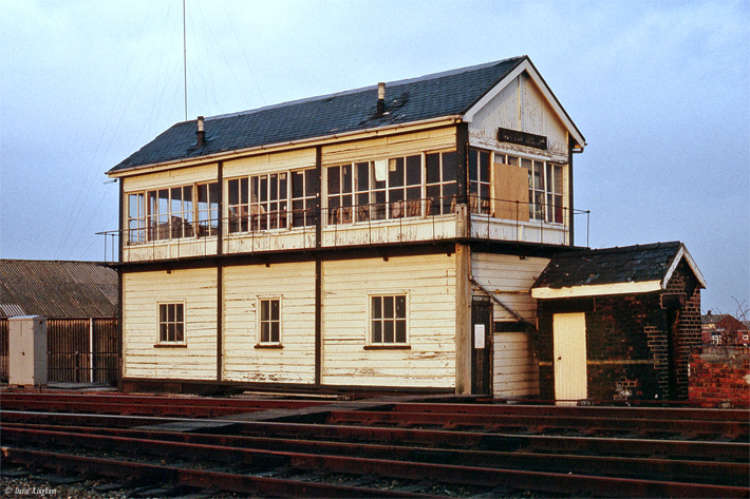


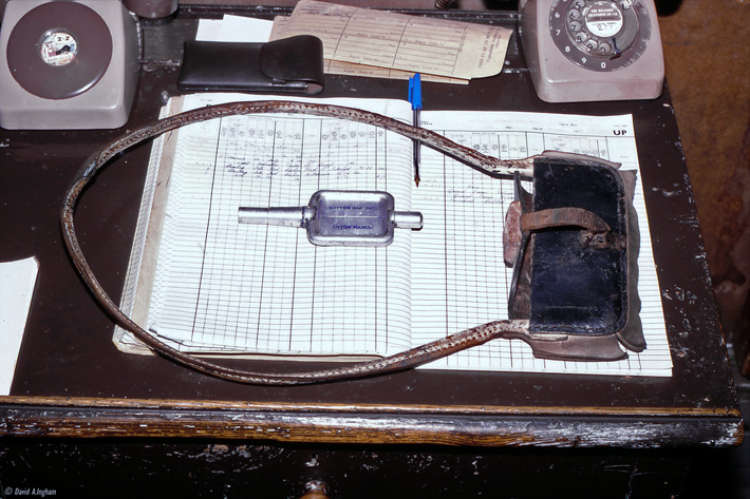
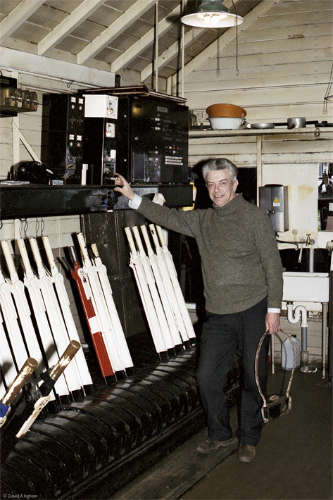
(All of the above photographs have been supplied by David from his extensive Flickr photostream. To view more of his excellent pictures please click here )
Sutton Oak Station.
A box was located at the station close to Sutton Oak Junction it had opened by 1879 but was abolished in 1931. This could be in connection with the new Junction box which had a larger lever frame than it predecessor.
Broad Oak Junction.
A box was located at this important junction and was open by 1880 probably due to the increase in traffic it was abolished in August 1899. It was replaced from that date with an LNWR Type 4 all wooden construction box. Another large box it was equipped with a 60 lever frame showing what a large junction this once was. The box was abolished on Sunday 16th November 1969 as the rail network contracted with the industry in the area. With the closure of the box the Absolute Block working was extended from Ravenhead Junction to Sutton Oak Junction.
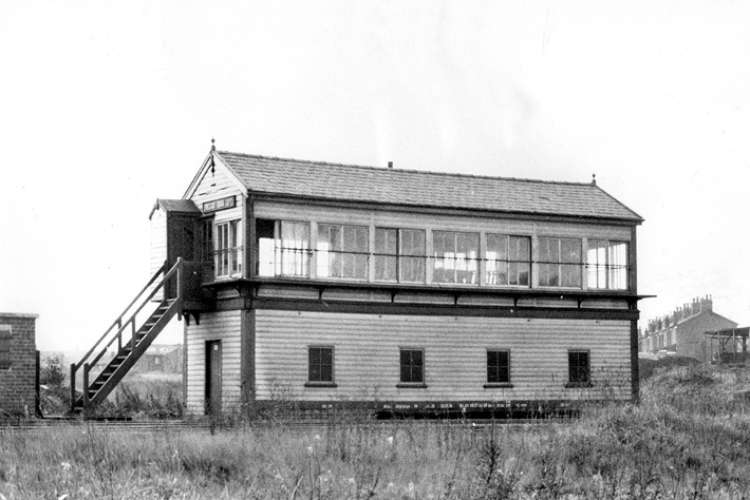
(All of the above photographs have been supplied by David from his extensive Flickr photostream. To view more of his excellent pictures please click here )
Peasley Junction.
An LNWR Type 4 box was opened at this location in 1880 to control the Pocket Nook junction. It was equipped with an LNWR 18 lever tumbler frame. The box was abolished in August 1900 but replaced from that date with another LNWR Type 4 equipped with a 20 lever tumbler frame. This box too was abolished closing on Sunday 13th December 1931 with the re-modelling of the junction to the line to Pocket Nook. There was still a single connection with the SH & RGR which trains would set back into from the Down line and this was controlled by a 2 lever ground frame which was electrically released from Ravenhead Junction box.
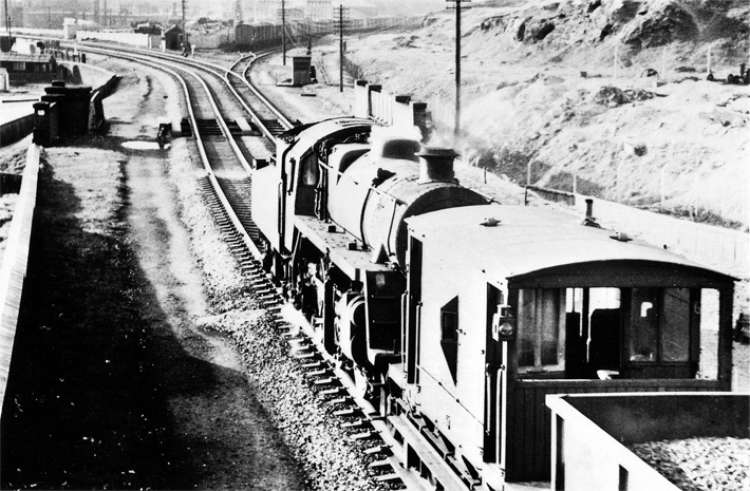
From the David Ingham Collection. (To view more of David’s excellent and extensive Flickr photostream click here )
Ravenhead Junction.
At this busy junction there have been a number of boxes the first was open by 1879 but had been abolished in 1883. The second box was an LNWR Type 4 box equipped with an LNWR 20 lever tumbler frame only 18 of which were working. This box too was abolished on Sunday June 11th 1944 and replaced immediately with an LM & SR Type 11 box which was equipped with a 20 lever frame. This box was destroyed by fire on Sunday 9th October 1977 the line was still busy with traffic and a temporary box opened from the October through to February 1978. During the period the temporary box was open BR found another box and set about building it on the site. The ‘new’ box was actually the ex Liverpool Exchange No1 box from the recently closed station. It was a BR LMR Type 15 box which was a wooden top on a brick base it was equipped with a 20 lever frame. The box was abolished with the closure of the line as a through route on Wednesday 11th July 1990.

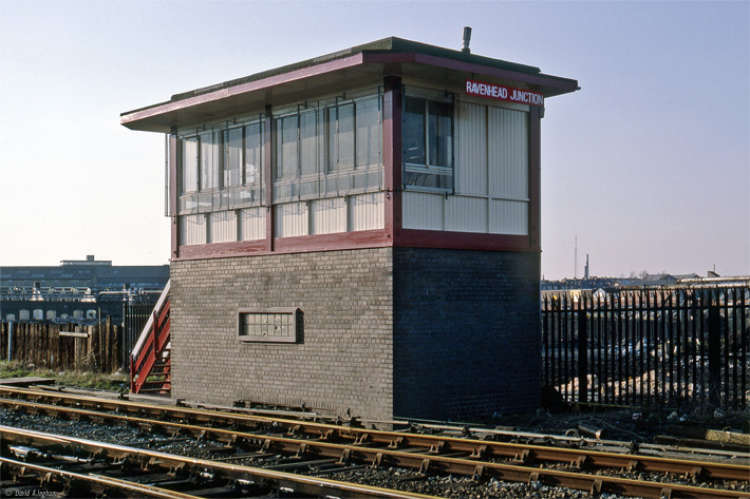
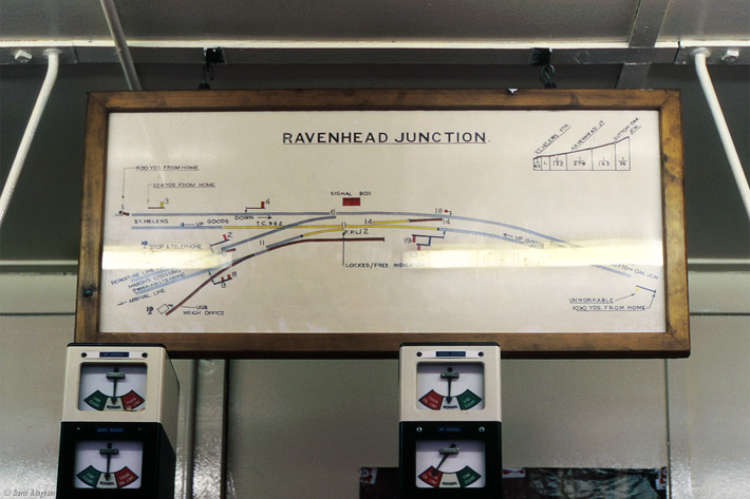
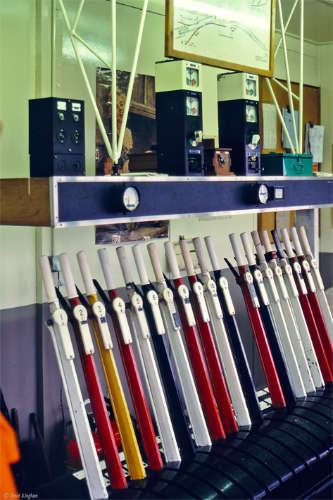
St Helens No3.
Opened in May 1896 and controlled the junction with the Liverpool to Wigan line and the St Helens to Widnes line. The box was an London and North Western Railway type 4 design with a wooden top on a brick base it was equipped with a 54 lever LNWR tumbler frame. The box was abolished on 11th June 1972 with St Helens No2/St Helens station box taking control of the junction.
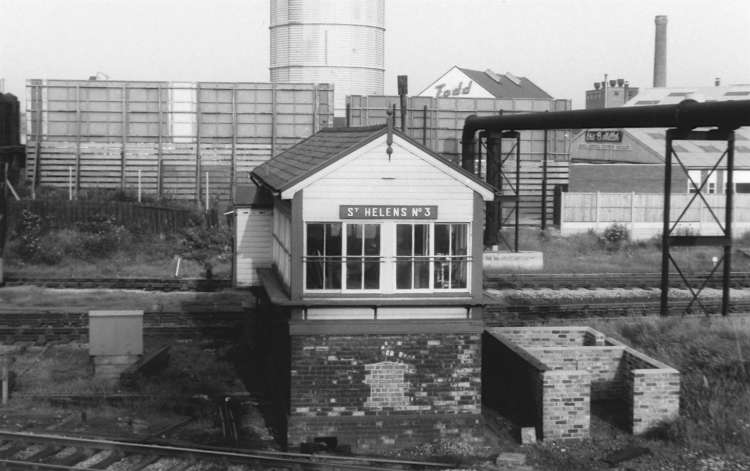
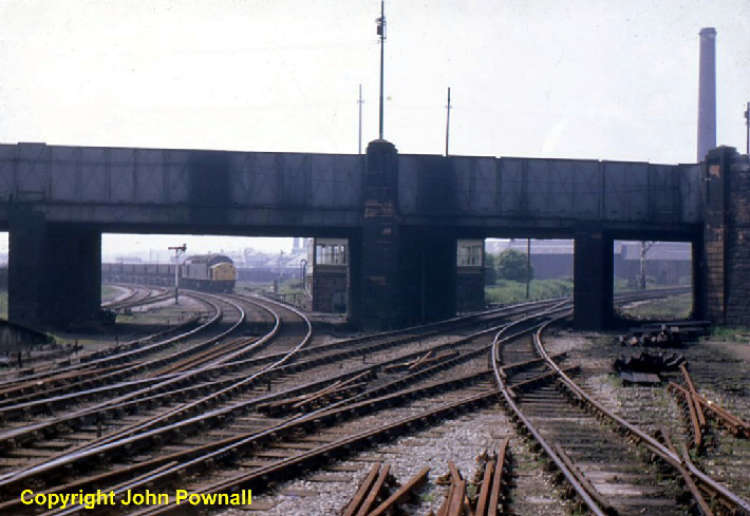
(To view John’s interesting and varied Flickr photostream click here )
